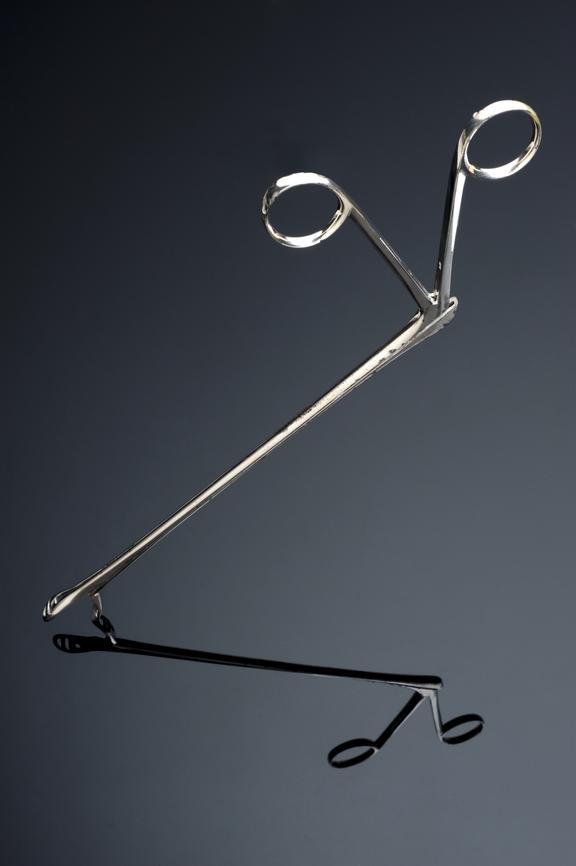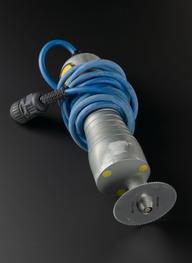

Lawson Tait-type gallstone forceps, London, England, 1902-1930
- maker:
- Down Bros Limited

Lawson Tait's gall-stone forceps, also used as ovum forceps, by Down of London, steel, nickel plated, early 20th century
Used in gallstone surgery and ovarian surgery, this type of forceps was invented by pioneering surgeon Robert Lawson Tait (1845-1899). He is mostly linked to ovariotomy – the removal of the ovaries – a procedure which had led to a high number of deaths. Tait changed operating procedures to improve this situation. The removal of the ovary and the Fallopian tube became known as ‘Tait’s operation’.
Gallstones are solid lumps or stones that can form in the gallbladder or bile duct. They are created when chemicals stored in the gallbladder harden into a mass. These forceps are designed to grasp then remove gallstones directly from the gallbladder.
Details
- Category:
- Surgery
- Collection:
- Sir Henry Wellcome's Museum Collection
- Object Number:
- A614572
- Materials:
- steel (nickel plated)
- Measurements:
-
overall: 4 mm x 275 mm x 80 mm, .05kg
- type:
- gallstone forceps
- credit:
- Down Bros Limited




